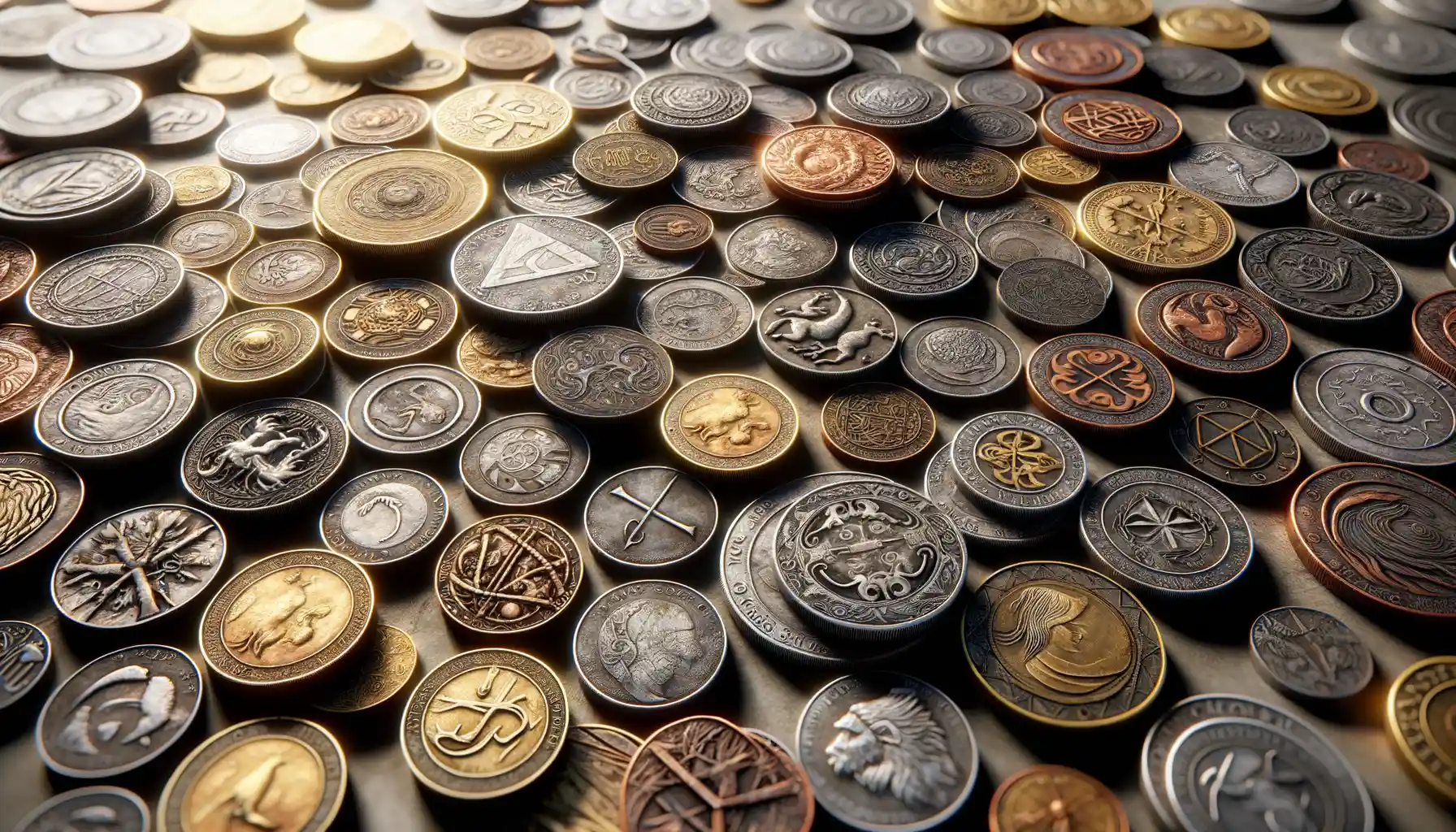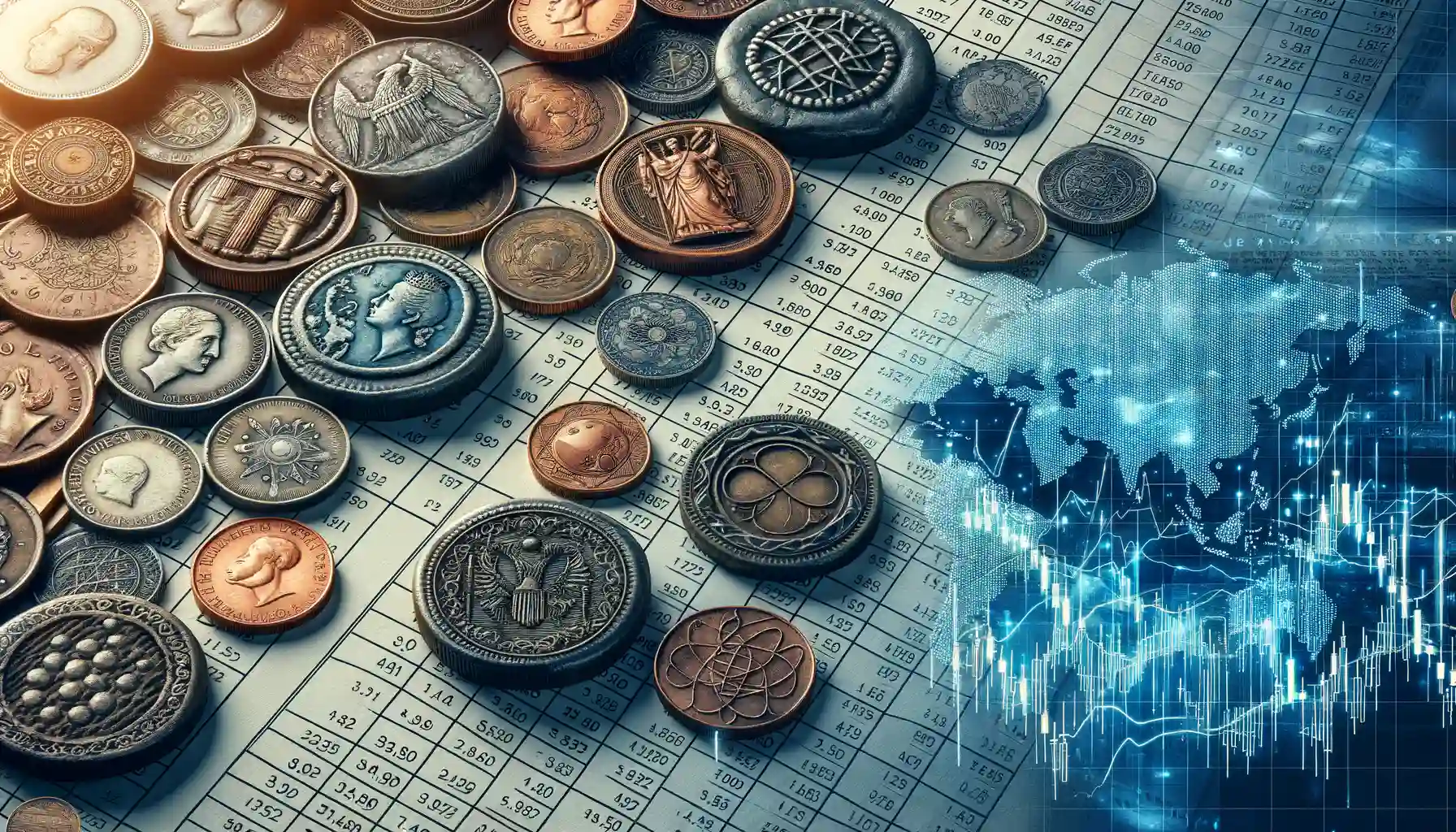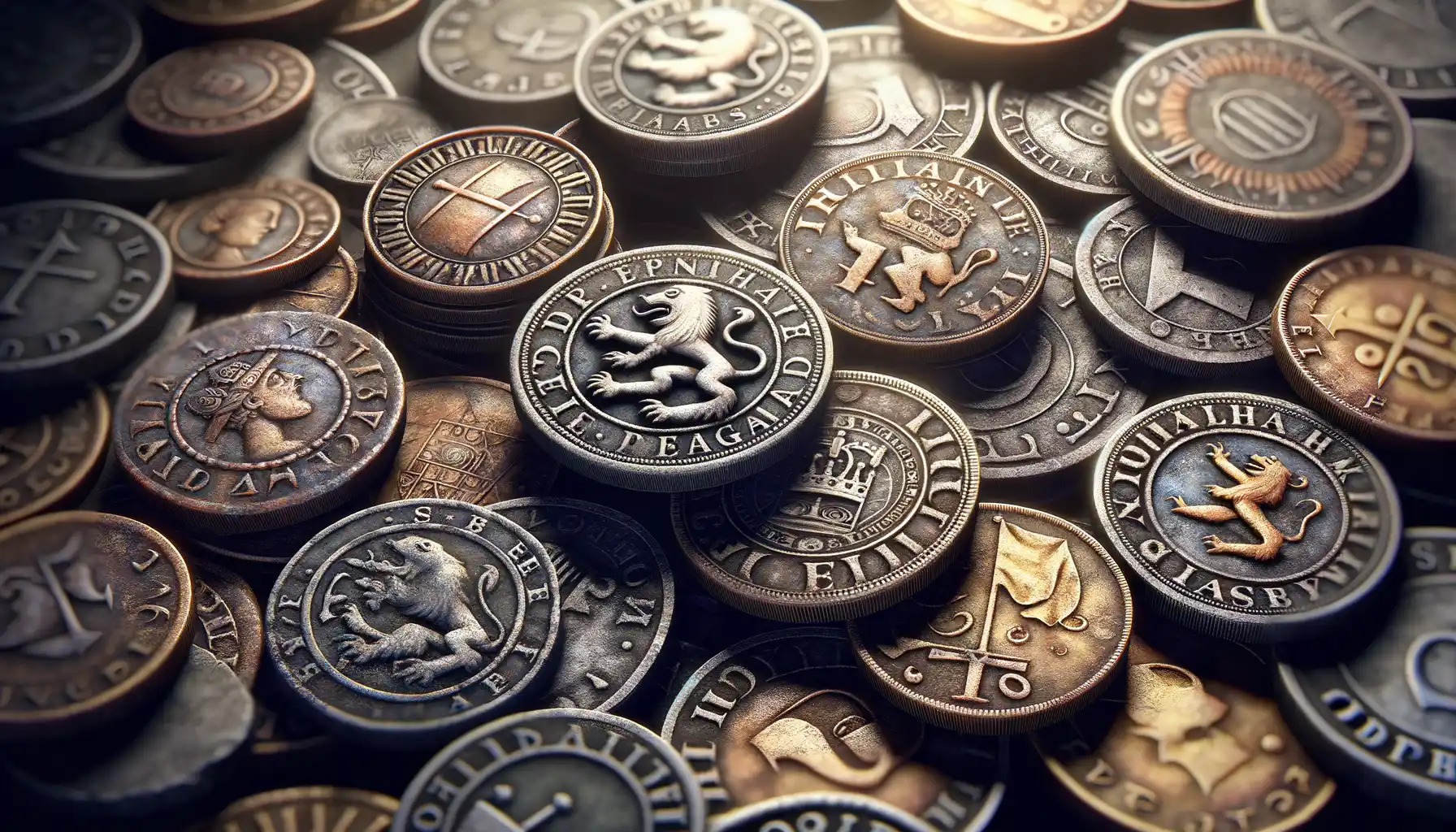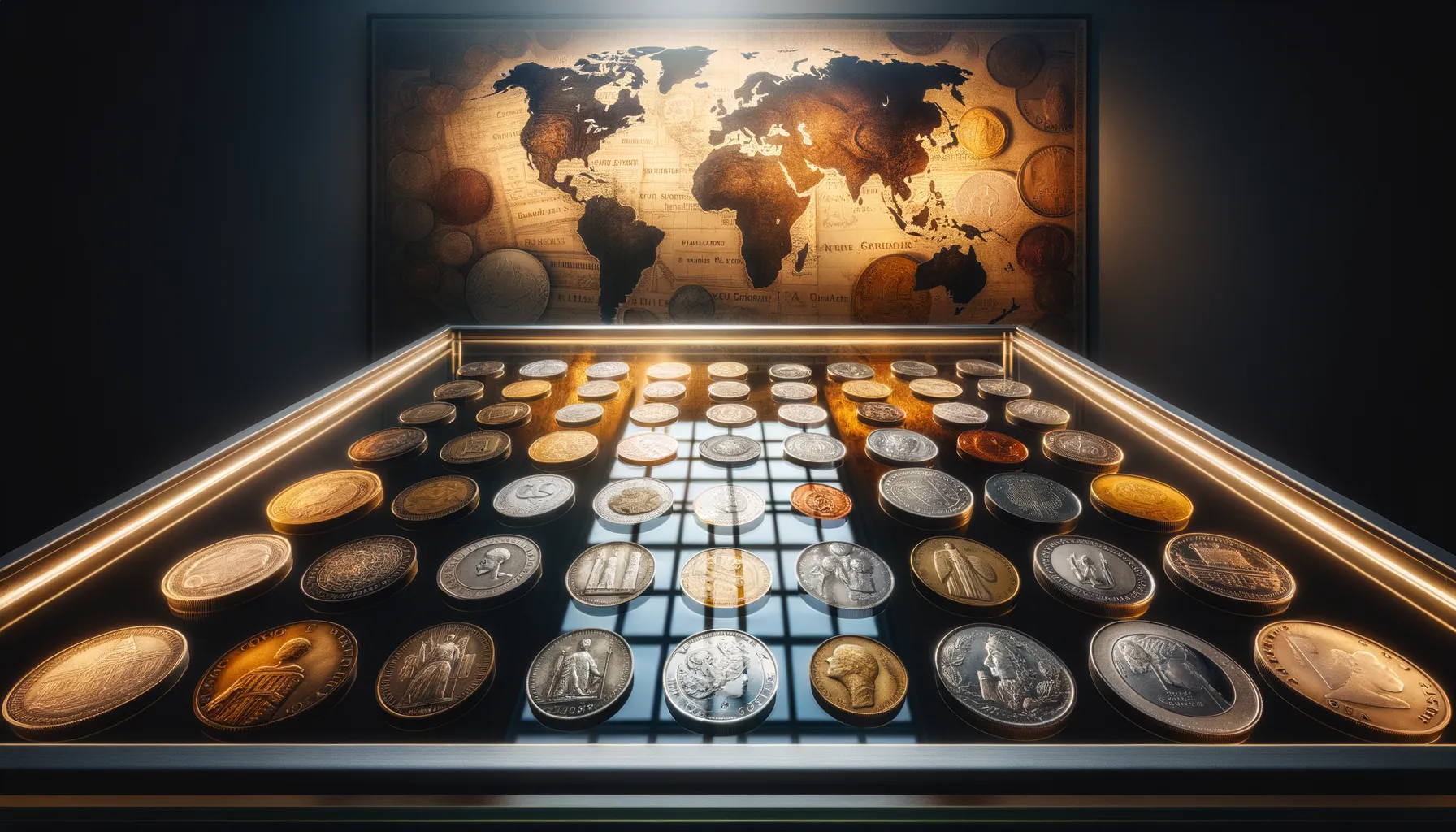Historical Role of Coins in Ancient Civilizations
The Birth of Coins: A Revolution in Trade
Imagine life in bustling ancient marketplaces—a cacophony of traders, goods spilling from carts, spices scenting the air. Before coins? Bartering ruled: grain for fabric, sheep for pottery. But how do you trade something as intangible as labor or ideas? Enter the revolutionary concept of coins. Around 600 BCE, the Lydians introduced the first standardized currency, and suddenly, a shiny piece of metal could speak for an hour of work or a measure of wheat.
Coins weren’t just convenient; they were transformative. Picture merchants carrying stamped pieces of precious metal that held universal trust. No more haggling over whether a goat was worth two axes! Coins created seamless exchanges and sparked cross-border commerce.
- Gold staters of Lydia: Gleaming symbols of wealth and innovation.
- Athenian “owls”: Silver coins adorned with Athena’s wisdom and owl insignia.
- Roman denarii: The engine powering conquest and empire-building.
Coins as Carriers of Identity
It’s fascinating how coins became miniature mirrors of their societies. In Ancient Greece, rulers minted coins not just for spending, but as declarations of cultural pride. A glance at those coins today reveals a world of gods, myths, and iconic landmarks.
Take the Romans—they took it up a notch, imprinting emperors’ faces onto coins like ancient selfies. Holding a denarius wasn’t just holding money but holding power, prestige, and propaganda. Coins connected citizens to their leaders, often without ever meeting them. They preserved history in their intricate designs, whispering to us from across the ages. Whether in gold or bronze, each coin carried stories of conquest, alliances, and faith. When you think about it, these weren’t just coins—they were civilization itself.
Symbolism and Artistic Expression through Coins

Coins as Tiny Canvases of Culture
Imagine holding a coin in your hand—so much more than metal. This is art, symbolism, and history compressed into the smallest of spaces. Across centuries, cultures have poured their identity into these circular canvases, transforming coins into portable masterpieces. From the intricate Greek drachma to the ornate Islamic dinars, every detail tells a piece of a society’s story.
Take, for instance, the Roman denarius. The faces of emperors weren’t just portraits; they were declarations of divinity and power. Or think of the Qing dynasty coins, where dragons coiled fiercely, embodying strength and protection. Even today, some coins carry hidden messages. Flip them over, and you might find animals, plants, or symbols that reflect values like unity, resilience, or hope.
- Colors and metals: Gold symbolizes wealth, copper hints at humility.
- Designs: Laurel wreaths stood for victory, while ships spoke of exploration.
When you look closely, you begin to see: coins are tiny artistic whispers, carrying the heartbeats of civilizations through time. With every design etched into them, they offer us a glimpse into the soul of a culture. What stories could your pocket change be holding?
Economic and Trade Implications of Coin Usage

From Bartering Chaos to Metallic Order
Did you know that coins revolutionized trade in ways no one could’ve imagined? Picture yourself in ancient marketplaces: chaotic haggling, goods swapped unevenly, confusion over value. Enter the coin—a small, shiny promise of fairness. With their standardized weights and metal purity, coins became the lubricant for the gears of commerce.
Suddenly, a grain merchant in Athens could strike deals with a spice trader from Persia—no guessing games involved. Coins created trust, a universal language for trade that crossed borders like nothing before.
But the magic didn’t stop there! Coins sparked financial systems—loans, savings, markets. Even today, their legacy is our modern economy.
The Ripple Effect on Social Classes
What I find fascinating is how coins reshaped society itself. They empowered common folk. Imagine being a farmer suddenly able to save wealth or pay artisans for skilled work. Coins blurred social lines, granting access to new opportunities.
At the same time, however, they concentrated power for rulers, who controlled minting. A double-edged sword, don’t you think? Coins weren’t just money—they were tools that redefined human interaction.
Coins as Tools of Political Propaganda and Power

Shaping Empires, One Coin at a Time
Coins have long been more than just a means to buy bread or silk; they’ve been miniature billboards wielded by rulers and empires. Imagine this: a small silver coin clinks in your hand, and on it, the commanding gaze of Caesar stares back at you. There’s no escaping it—his image is everywhere, watching, reminding you who holds the reins of power.
For ancient leaders, coins were like tweets with no delete button. Julius Caesar didn’t just mint money; he minted messages. His face on a denarius spoke volumes about his might, whispering (and sometimes shouting), “I’m not just a man—I’m a god.”
- Victory? Commemorated instantly on coins with laurel wreaths.
- New territory conquered? Emblazoned for all to see with exotic symbols.
- Birth of an heir? Proclaimed on gold to secure dynastic loyalty.
Manipulating Minds Through Metal
It wasn’t only emperors who mastered this craft. Medieval kings stamped their coins with holy crosses, linking their rule to divine approval. Flash forward, and even modern states join the game. A wartime leader? Their stoic profile appears, rallying unity. Coins, as it turns out, are tiny tools of propaganda, slipping into your pocket and quietly persuading you with every transaction. Fascinating, isn’t it?
Modern Cultural and Collectible Value of Coins

The Allure of Coins in Modern Culture
Coins today are so much more than jingling spare change—they’re tiny time capsules, carrying whispers of history and beauty into the modern world. They’ve morphed from mere currency into treasures that spark curiosity and passion, often weaving together stories of art, culture, and personal identity.
Take a look at the hobby of coin collecting, or numismatics, for example. It’s not just about owning a shiny disc—it’s about holding a piece of someone’s life, a nation’s struggles, or an ancient civilization’s golden age. Imagine flipping over a centuries-old coin, feeling its weight, and realizing it once traveled through bustling silk markets or medieval town fairs.
- Rare limited-edition coins, like the U.S. Mint’s commemorative series, are coveted by collectors for their intricate designs and historical significance.
- Cultural-themed coins from countries like Japan or Canada celebrate everything from national parks to local folklore.
But the magic doesn’t stop with collectors. Coins have crept into pop culture too. Think of gift shops selling souvenir coins as mementos or movies where gold doubloons symbolize adventure and hidden riches. There’s something undeniably human about this mix of nostalgia, artistry, and longing for the past.
How Coins Build Cultural Bridges
Coins also serve as ambassadors of diversity, showcasing the unique flavors of societies worldwide. A quick glance at a stack of foreign coins reveals a kaleidoscope of identities—portraits of leaders, mythical creatures, symbols of freedom, and even animals like Australia’s famous kangaroo or China’s beloved panda.
Moreover, coins commemorate moments that hold collective meaning. From the Olympic Games to space exploration, they immortalize achievements that unite people across borders. Isn’t it remarkable how something so small can carry such big stories? These little metal tokens speak a universal language, reminding us that while countries differ, the urge to celebrate life’s milestones is something we all share.
